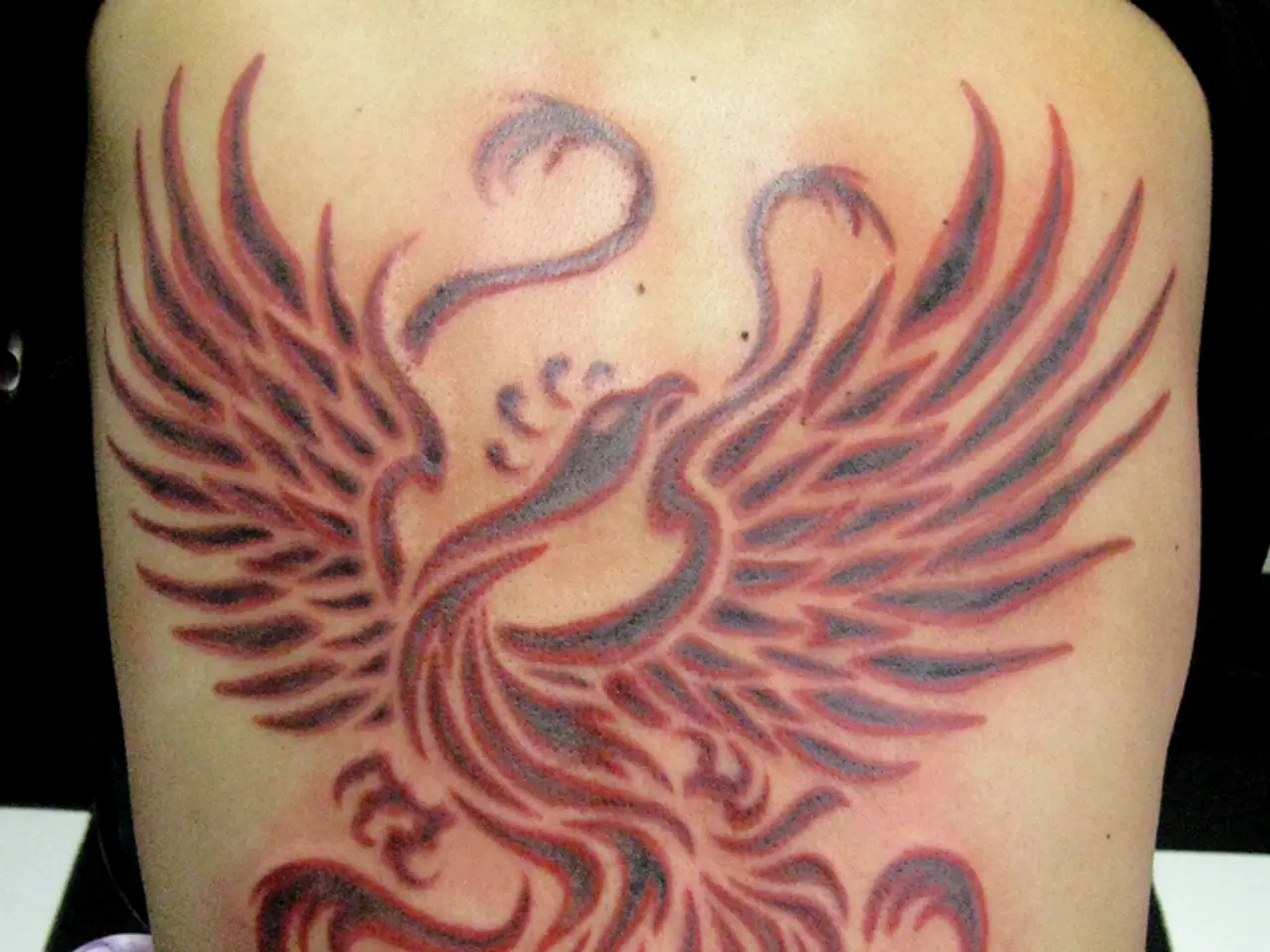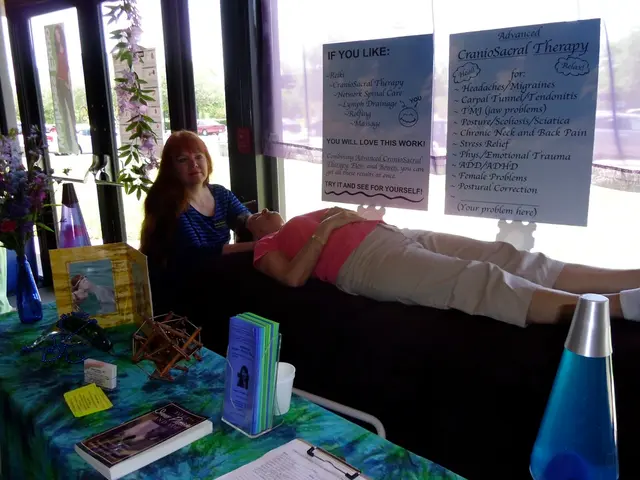Time required for a tattoo to recover or undergo complete healing process.
Tattoos, a popular form of self-expression, are a permanent addition to one's body. But with this permanence comes the responsibility of proper care during the healing process. Here's a breakdown of the key stages of tattoo healing and some essential aftercare tips.
Open Wound / Initial Healing (Days 1–3)
The tattooed skin is red, swollen, and sore during this phase. Some oozing or fluid discharge is normal as the skin begins to heal. Keep the tattoo clean with gentle washing using lukewarm water and mild, unscented soap. Avoid soaking or harsh scrubbing. Moisturize lightly with tattoo-specific balm (avoid petroleum-based products) and cover the tattoo with a breathable dressing as advised by the artist. Avoid swimming, heavy sweating, and strenuous exercise to prevent infection and irritation.
Scabbing & Peeling (Days 3–7)
During this period, the tattoo forms scabs and the top skin layer peels off. It may be dry, itchy, and sensitive. Continue gentle washing, moisturizing, and avoid scratching or picking off scabs to prevent scars or loss of ink. Avoid soaking the tattoo in baths, pools, or hot tubs. Quick showers are recommended, taking care that water doesn't hit the tattoo directly.
Dry Skin & Flaking (Days 7–14+)
The tattooed area may appear flaky and continue to dry out as new skin replaces the peeling layer. Hydrate the area with light, fragrance-free moisturizer to soothe irritation. Avoid direct sun exposure and keep protecting the tattoo from scratching or trauma. Most tattoos take around 2-3 weeks to heal superficially, but full maturation of the tissue can take months.
Additional Aftercare Tips
- Do not change the tattoo jewelry or peel scabs prematurely, as this may cause infection or permanent damage.
- Avoid sun exposure or tanning beds; once healed, use sunscreen on the tattoo to prevent fading.
- Keep the tattoo clean and dry when not cleaning, and wear loose clothing over the area to avoid friction.
- If you notice persistent pain, excessive redness, swelling, or signs of infection, consult a tattoo professional or healthcare provider promptly.
Following these care steps through each healing stage will promote proper tissue recovery, preserve tattoo vibrance, and minimize complications.
The type of tattooing device and color of ink can also affect healing time, with red pigments potentially causing delayed hypersensitivity reactions and slowing the healing process. If you experience any unusual symptoms or concerns, seek professional help immediately.
Choosing a reputable tattoo studio that practices good aseptic techniques is crucial to the healing process. The American Academy of Dermatology Association recommends moisturizing with a water-based cream, protecting the tattoo from the sun with sunscreen, avoiding tanning beds, not tattooing over moles, and washing the tattoo regularly with fragrance-free soap for proper tattoo healing.
The size and location of the tattoo can impact healing, with tattoos near joints or areas that flex taking longer to heal than those in less mobile areas, and larger tattoos taking longer to heal than smaller ones. People should avoid strenuous activities, sunbathing, and submerging the tattoo in water during the healing process to minimize the risk of infection and complications.
Tattoos may trigger or exacerbate skin conditions, such as psoriasis and eczema, either on the tattooed skin or elsewhere on the body. If people notice any flare-ups or changes in their skin, they should contact a healthcare professional. Allergic reactions to tattoo ink and potential infections are most likely to occur during the first few weeks.
By weeks 3 and 4, most of the scabs and peeling skin should have gone, and people should continue to moisturize the skin to hydrate it if it feels dry. The artist's skill can affect the healing time, as rough or poor techniques can cause additional skin trauma. Choosing a tattooist who adheres to state licensing laws is crucial for the healing process.
If a person has an allergic reaction to a tattoo, they should seek professional help if the tattooed skin becomes itchy, red, or swollen or has scaly patches or lumps, or if they experience severe symptoms such as breathing difficulties, dizziness, or rapid heartbeat. The National Conference of State Legislatures publishes the requirements for tattoo licensing in different states.
- Individuals suffering from HIV, depression, obesity, ulcerative colitis (UC), or mental health issues should be mindful of the potential effects of tattooing on their health during the healing process.
- In the context of health-and-wellness and skin-care, it's crucial for people with skin conditions like psoriasis and eczema to monitor their skin for any changes or flare-ups after getting a tattoo.
- Choosing a reputable tattoo studio that employs predictive, preventive, and aseptic techniques can help ensure a smoother healing process for people with health conditions.
- Whether you have asthma, depression, or obesity, the size and location of the tattoo can influence the healing process, with larger tattoos or those in more mobile areas requiring more time to heal.
- In the initial healing phase, all tattooed individuals should follow the same aftercare tips, keeping the tattoo clean, moisturized, and protected from infection and trauma, regardless of any existing health conditions.
- Individuals with health issues such as HIV or skin conditions like psoriasis, eczema, or allergies to tattoo ink should consult a healthcare provider or tattoo professional before getting a tattoo to minimize the risk of complications.




